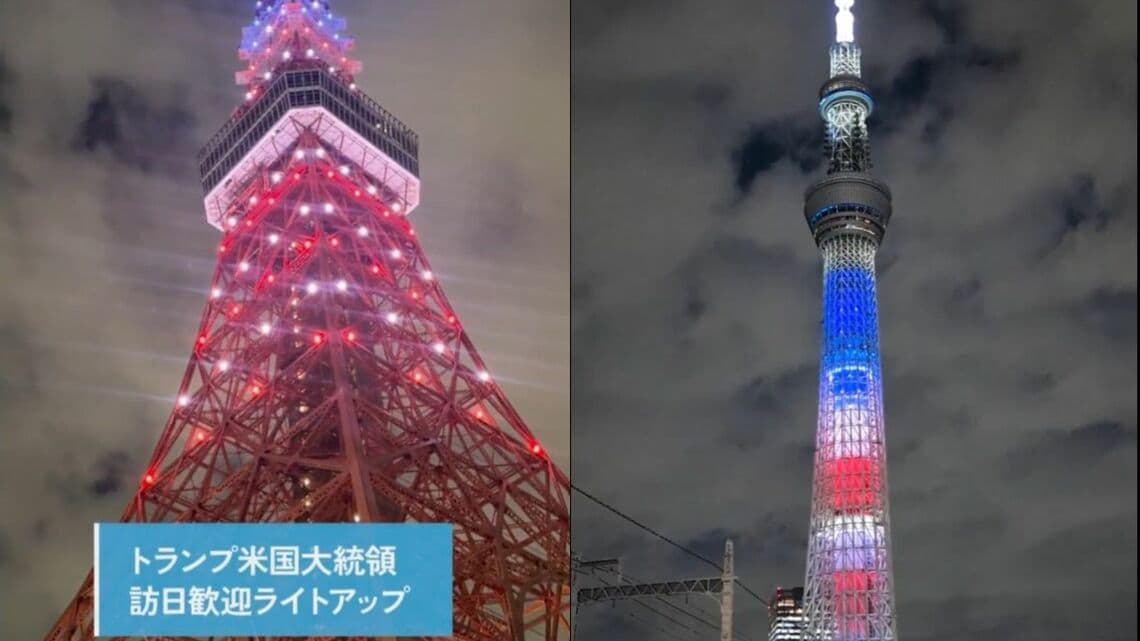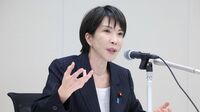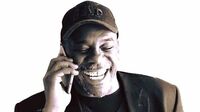
MOFA Official X (formerly Twitter)
During President Donald Trump’s visit to Japan (October 27–29), Tokyo Tower and Skytree were lit in red, white, and blue as part of the official welcome. We collected written responses from American residents in Japan about how they interpreted the gesture.
Critical Responses
any respondents said they did not see the lighting as a celebration.
“I do not feel represented by this gesture. Narcissists expect it to be all about them. With this administration, payola is what they desire. Ask Qatar!” said C.M., a former military officer who has lived in Japan for over a decade.
“In an ideal world, anything connected to Trump would be rejected as offensive and criminal, and his corrupt regime would not be shown a modicum of respect from friendly nations,” said J.B., an educator based in Tokyo since 2015.
“It’s all so offensive to decent people, and so I wish these landmarks would not be used this way for this purpose.”
“For the most part, I'm indifferent about such patriotic and/or nationalist gestures, but given my personal distaste for Trump, I find myself somewhat sickened by it,” said P.J., a university lecturer in Kansai. “This is all about diplomacy and stoking Trump’s overinflated ego. For me personally, this is the least proud I’ve ever felt about being an American.”
“I don’t feel represented by the gesture because it’s not for America or Americans, but for Trump,” said Y.K., a longtime resident of Japan. “Trump isn’t for America, only for himself and what he can profit from. He spews hateful rhetoric to gain more power, and sadly, it’s being mimicked here in Japan. I’m not represented in either country.”
Protocol-Based Response
some respondents viewed the lighting as a standard protocol for a visiting head of state.
“I think it’s a sign of welcome, a sign of friendship and respect — not for Donald Trump as a private individual, but for the President of the United States,” said S.K., a novelist in Tokushima. “If things had turned out differently, I am sure that the same lighting would have been used to greet President Kamala Harris.”
“I do see this as a formality. I’m sure we would do this for any other dignitary. Being that America is a favored country to Japan, it should be a celebration,” said W.A., a tech consultant in Tokyo. “And it may be. I just feel he doesn’t deserve it.”
“Seems respectful as a Japanese ally is visiting,” said M.B., a teacher in Chiba. “Seems less harmful/wasteful than printing little paper flags and lining the streets. Reality is, they are cellphone towers — not Mt. Fuji or the Great Buddha.”
“I realize this gesture is a formality which has also been initiated for other Presidents,” said M.M., a touring musician in Japan since the early 2000s. “On the other hand, I wish that Japan would show more courage like Canada and European nations, which have spoken out on the policies and actions of this current government.”
Strategic Responses
thers linked the gesture to Japan’s diplomatic position.
“He’s quick to fall for flashy gestures—they feed his ego,” said W.T., a writer and translator in Osaka. “It makes him more open to persuasion.”
“Big, flashy actions are what this administration pays attention to,” said L.S., a nonprofit coordinator in Tokyo. “That’s why the No Kings protests on October 18 drew one of the biggest crowds in U.S. history.”
Trump acts like a king and wants grand welcomes. I get why some countries play along—he attacks anyone he sees as an enemy.
“Japan largely cannot say no to the U.S.,” said M.M. “I honestly wish this were not the case, and hope Japan can do something to lessen this dependency.”
“The Japanese probably know that these kinds of things matter to him, as he needs his giant ego constantly stoked,” said P.J. “And they want to put their best foot forward when doing any negotiations with him.”
While some respondents saw the lighting as routine protocol, many reported discomfort or personal rejection of the gesture. A number of participants also framed the decision in terms of Japan’s diplomatic interests and constraints.



